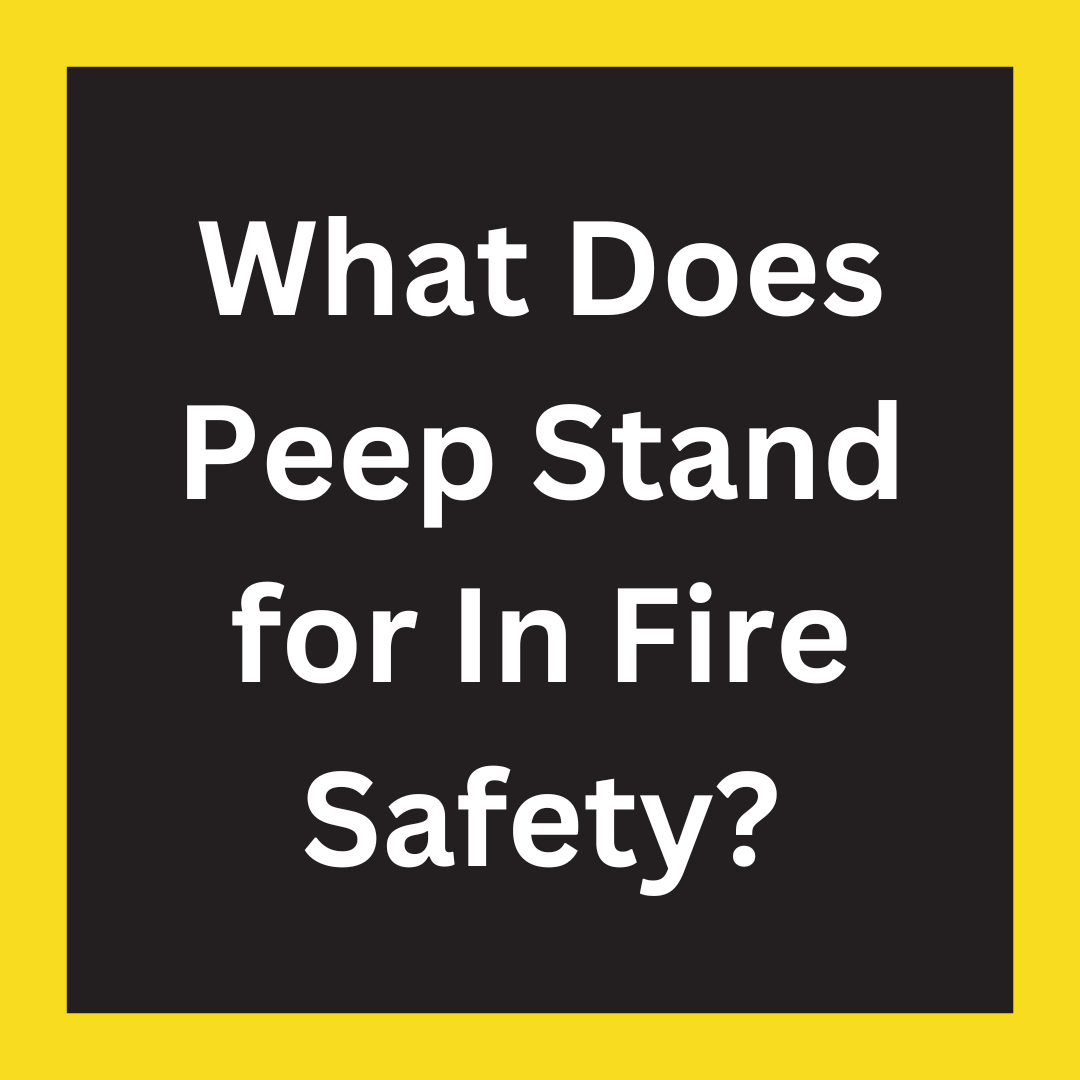
In the event of a fire emergency, evacuation plans are typically designed to ensure the safe and speedy evacuation of all occupants of a building or premises. However, people with disabilities, reduced mobility, or certain medical conditions may require additional assistance or accommodations to evacuate the building safely. That is where the Personal Emergency Evacuation Plan (PEEP) comes in.
What is a PEEP?
PEEP is an acronym that stands for Personal Emergency Evacuation Plan. It is a vital part of fire safety planning that is designed to provide assistance and support to individuals with disabilities, reduced mobility, or certain medical conditions during an emergency evacuation.
The Importance of a PEEP
PEEPs are crucial to ensure the safety and well-being of individuals with disabilities or reduced mobility during a fire emergency. By providing tailored support and assistance, a PEEP can help to ensure that these individuals are able to evacuate the building safely and efficiently, reducing the risk of injury or harm during an emergency evacuation.
Elements of a PEEP
A PEEP should be tailored to the needs of each individual, taking into account their physical abilities, communication needs, and medical conditions. The plan should be developed in consultation with the individual concerned and should be reviewed and updated regularly to reflect any changes in their needs or circumstances.
Evacuation Assistance
One of the essential elements of a PEEP is evacuation assistance. This may include providing support or assistance to help an individual move to a safe location, such as providing a wheelchair, walker, or other mobility aids.
Communication Support
Individuals with communication difficulties may require additional support to ensure that they receive clear instructions during an emergency evacuation. Communication support can be included in a PEEP to address these needs.
Personal Protective Equipment
Individuals with certain medical conditions may require additional personal protective equipment, such as oxygen masks, to enable them to safely evacuate the building. A PEEP can identify and address these needs.
Alternative Evacuation Routes
In some cases, individuals may require alternative evacuation routes to those typically used by other occupants of the building. This may be necessary where stairs are not accessible or where there are other obstacles that may pose a barrier to evacuation.
Assistance Animals
Some individuals may require the assistance of service animals during an evacuation. A PEEP can ensure that plans are made to safely evacuate these animals along with their owners.
Additional Support
A PEEP may also identify individuals who require additional support during a fire emergency, such as elderly individuals, pregnant women, or individuals with mental health conditions.
Integrating PEEPs into Fire Safety Planning
It is important to note that the development and implementation of a Personal Emergency Evacuation Plan should be done in conjunction with the building’s overall fire safety plan. This will ensure that the PEEP is integrated into the wider fire safety strategy and that all occupants of the building are adequately protected in the event of a fire emergency.
Conclusion
A Personal Emergency Evacuation Plan is an essential component of fire safety planning that seeks to ensure the safety and well-being of individuals with disabilities or reduced mobility during a fire emergency.
By providing tailored support and assistance, a PEEP can help to ensure that these individuals are able to evacuate the building safely and efficiently, reducing the risk of injury or harm during an emergency evacuation.
